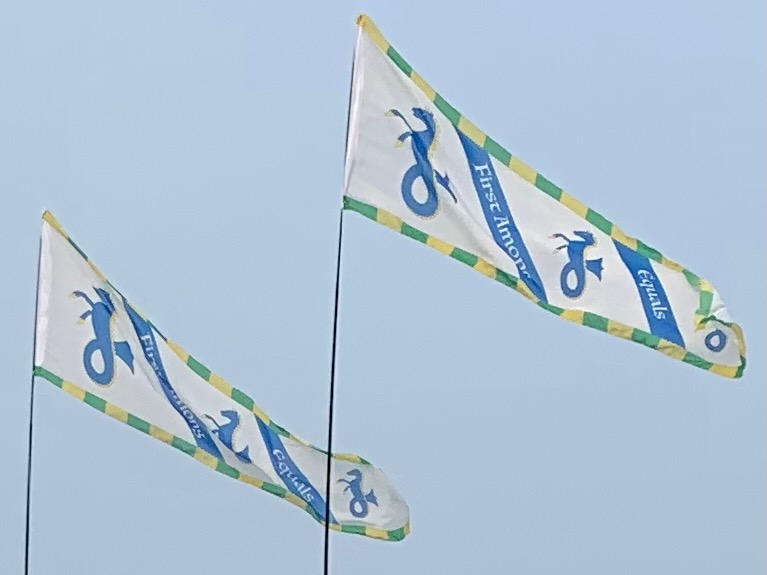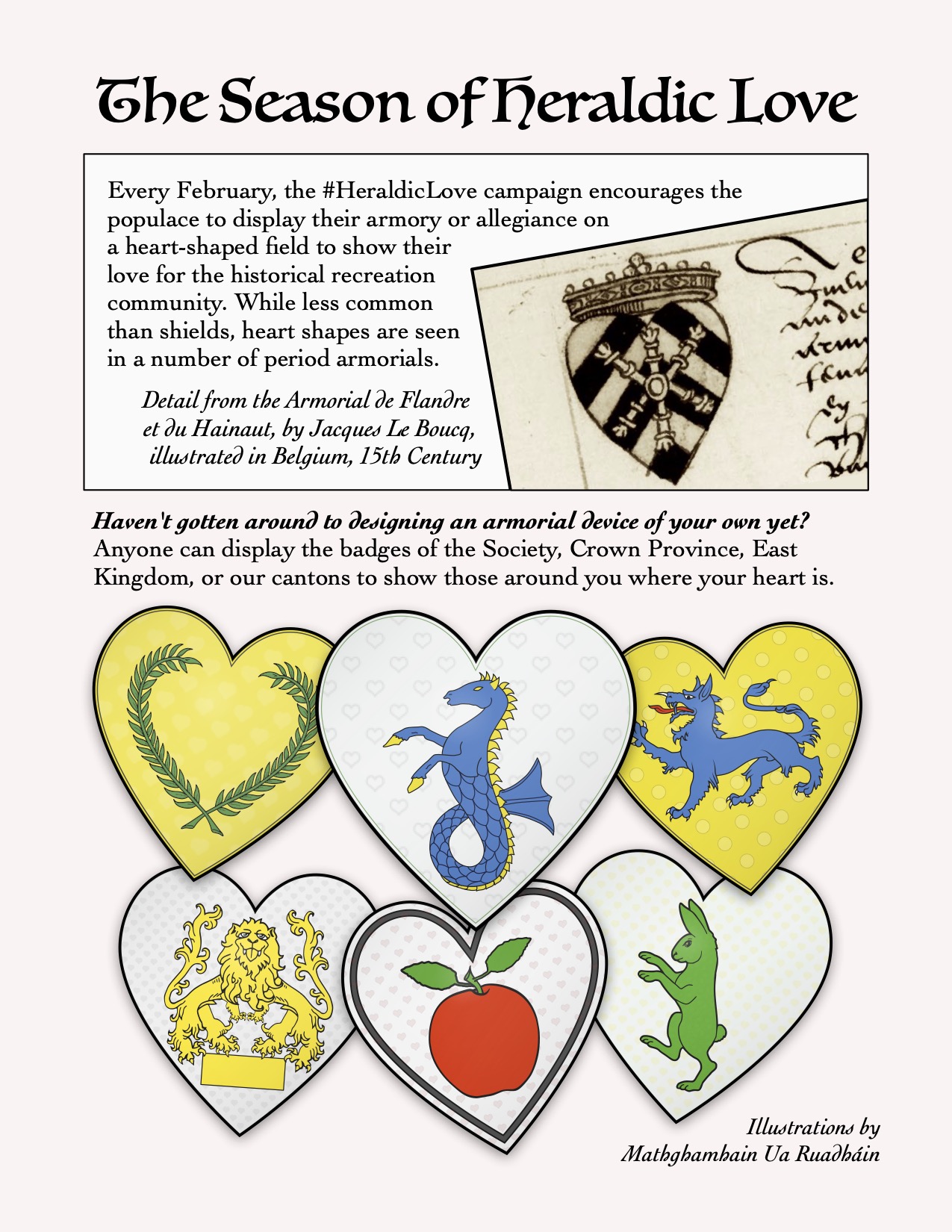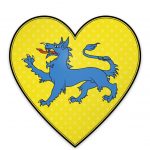As mentioned in my recent post of baronial banners, House Runnymede is an association of the landed nobles of the East Kingdom, formed in an era when the baronage felt they might need to coordinate their efforts in response to royal overreach.
In years gone by, a badge was proposed for Runnymede, although it was never registered with the College of Arms. The insignia combines symbols of the House’s common greeting — tilting one’s coronet as you pass a fellow member — with its primary activity — gathering for informal conversation over drinks.

House Runnymede
A goblet argent enfiling a coronet bendwise Or.
For the landed baronage of the East.













